Enjoying Jeju
Jeju island is quieter place with a chill pace
COUNTRIES
In my last Countries blog, I left off as we boarded our overnight ferry from Busan to the island of Jeju. I shall pick up then, right where I left off: climbing the ramp up onto our majestic flagship as the sun set over the Busan Bay.
We chose to make our journey to Jeju via ferry after watching another traveling couple's vlog. They championed this slower and unique form of travel, and the idea intrigued.
Our journey started off in style. Our ferry bedroom was, ironically, the largest room we've had since coming to Korea, with two comfy beds, couch, table, and sink. The communal shower and bathrooms were clean and spacious. And on the ferry's top level, you could sit comfortably and watch the buildings light up in the dusk or head out onto the open-air deck to get 360 views. Quite stunning.
Once we had left behind the lights of Busan and headed out into open ocean, we retreated to our room to eat snacks and red wine we had secreted into our room. We curled up on the mini-couch to watch A Man Called Ove, a movie based on a novel by Fredrik Backman, which we had read aloud to each other in the first of our relationship. I highly recommend both the book and movie to just about anyone.
What a lovely evening! Unfortunately, things took a slight wrong turn as the night went on. I had taken a Dramamine early on, knowing I'm prone to sea-sickness. I generally avoid Dramamine on boats because it tends to knock me out, but I thought, hey, no problem, it's an overnight ferry, knock away. Luckily, I did not get sick feeling. Unluckily, I did not sleep. My Navy Captain uncle and many other more seaworthy friends would likely have been unphased, but the level of boat swaying, lifting and dropping at unexpected intervals had us both jittery and awake throughout the long night. By the time the lights turned at 5AM to hasten us up before docking, we were both bleary eyed and woozy. We slept on the bus ride to our sleepy home base, Seogwipo, but were still exhausted and grumpy when hotel staff indicated rooms would not be available until 3PM, some 8 hours later.
Not awake enough to take on anything more ambitious than a walk around, we started off towards the nearest green space on the Naver map.1 As it turned out, this was Geolmae Ecological Park, one of the great attractions in Seogwipo, and home of the Chilsmni Poet Park, Cheonjiyeon waterfall, and some sweet, sweet wooden lawn chairs, on which I commenced to nap in the sun for a very reviving half hour.
Our meanderings later brought us sighting of yet another lovely waterfall, Sojeongbang, and some free live music performance and festival along the shore that also featured some beautiful and impressive melon carvings.
A kindly older man befriended us in the street whilst we were confusedly searching out food and pointed us to the traditional market, where we would have many of our meals in the coming days. Along with the requisite seafood, Jeju is also known for its black pork, which comes from an exceptionally cute black-haired pig that lives here on the island. Upon entering the bustling marketplace, we were drawn to a popular stall, where they served fried and breaded rice cylinders stuffed with black port, as well as more bready buns filled with creamy lobster. We ate these huddled on benches in the middle aisle and washed this yummy if deeply unhealthy and non-vegetarian2 delights with another Jeju special: mandarin orange juice.
Later trips to this market uncovered new delights, including peanut dumplings (shaped like large peanuts but had fillings more akin to pad thai); pork knuckle (which Shadie had fond memories of from his prior trip to Seoul), and a variety pack of mochi, with different fillings and toppings such as mandarins, sunflower seeds, and sesame paste. This last powered me through our hike up Hallasan Peak two days later.
The careful readers among you may have noticed I skipped from day one to our day three Hallasan hike in this narrative. In doing so I passed over another great experience: the coastal bike ride!3 On day two, much more well rested, we rented some E-bikes for the decent price of $30/day and commenced a ride along the coast. Jeju seems to draw a lot of bicyclists. In fact, many of the folks on the ferry were spandex clad Korean men, clearly ready for multi-day bike-packing. It's so popular, there's a blue line that runs along the recommended coastal route counterclockwise, that you can easily follow around the island.
The section of coast we road, is apparently an area used most frequently by Haenyeo, women free divers that, in charge of household earnings, led a somewhat matrilineal lifestyle. Shadie and I both read4 The Island of the Sea Women by Lisa Sea, a story centered around Haenyeo and loved it. We did see some women and men scavenging the coast with buckets but no one actually diving. Haenyeo are rare these days, as people seek less dangerous and more profitable employment, but they are considered part of Korea's cherished heritage.
The ride took us from one pleasant coastal view to another, and if I were forced to comparison, would say Jeju feels a bit like a mix between Hawaii and California's central coast. That being said, Jeju has its own unique flavor (especially tasty foods flavor!) and we wish we had devoted a few more days to exploring its wonders.
Footnotes:
1) In a previous post, I mentioned that Google Maps has minimal functionality in South Korea. Luckily there is an alternative app, Naver, which we would be lost (literally) without. Naver lacks some of the commercial establishment information and details about business and restaurants that Google has, but absolutely excels at providing clear and detailed transit instructions, as well as decent bike, walking, and driving routes. If you ever choose to journey to South Korea (and you should!), do yourself a favor and get Naver.
2) I've dabbled in and out of full vegetarianism for most of my life and have not eaten beef (except on very special occasions) for nearly 15 years. Most recently, Shadie and I have settled on being pescatarian at home. But I determined early on that I would drop these strictures during our travels, as I find it difficult to experience many cultures with this requirement, not to mention effectively communicating it in foreign languages. So, we eat meat regularly here, and while I generally don't order any beef products knowingly, I don't stress if it ends up on my plate. For my more dedicated vegetarian friends out there, I'd say that its quite difficult but not impossible to travel vegetarian here. Like many cultures, meat is central to celebrated cuisine here in South Korea, from the cook-your-own meat Korean BBQ experience to the famed Korean Fried Chicken, to bulgogi and most kimchis (which almost always have shrimp or fish paste in them). There are certainly many Korean dishes that are at the very least pescatarian, such as the green onion pancakes, many varieties of bibimbap, various tofus and soups, and the ubiquitous pastries and sweets found at cafes throughout the country. If you were trying to be strict, you may end up sticking more to westernized restaurants. Knowing some Korean might help you get by much better too.
3) For those who are interested, I'm creating a separate post in the Transportation! section that goes into more detail on the bike infrastructure and culture I've observed in South Korea.
4) I have enjoyed getting the chance to read more on this trip, almost exclusively via library or Audible audiobooks on bus, train, or plane rides. That being said, I don't have as much free time as I thought we might have and after long days of walking (I have guessed our overall average is 7-8 miles a day excluding hikes) and planning for upcoming destinations that I often fall asleep before getting through a single chapter in the evenings!
Hallasan is the tallest mountain in South Korea and considered sacred to some. A shield volcano that is still considered active and may have last erupted around 5,000 years ago, Hallasan rises up near the very center of Jeju Island and is the predominant sight from every direction. It's a very popular hiking destination, and we had to sign up ahead to get a free permit for our hiking window start time (6-8AM). Although lacking the challenges of elevation, with its peak at 1,900m (about 6,400ft), Hallasan is a challenging ascent. We climbed over a mix of rocky terrain and well-hewn wooden steps for close to four hours and were rewarded at various points with spectacular views of the peak and surrounds in between deeply wooded stretches. The peak itself was an extremely crowded, but still satisfying finale. At the end of the day, we rewarded ourselves with some decidedly less traditionally Korean, but none-the-less scrumptious, meal of burgers (mushroom cheese) and fries.
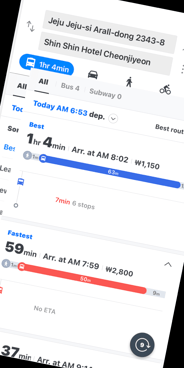

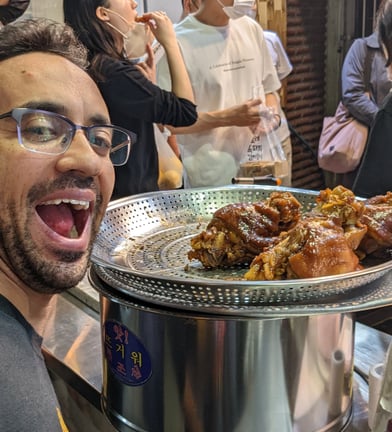

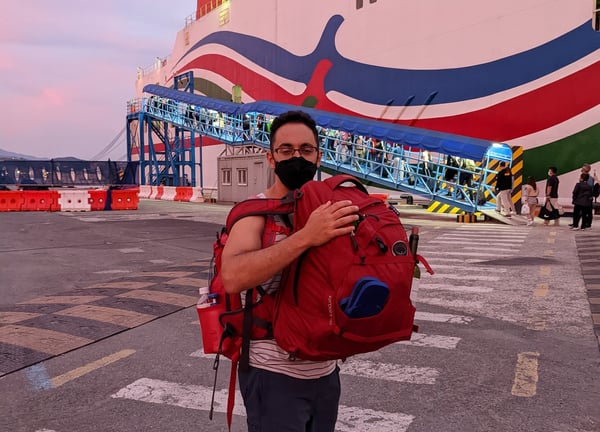

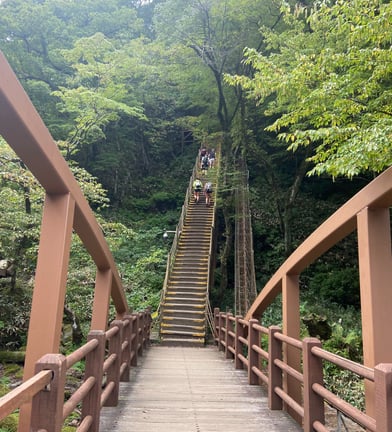

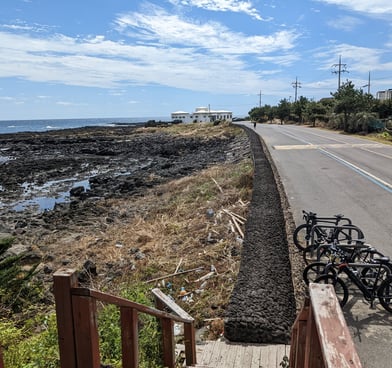

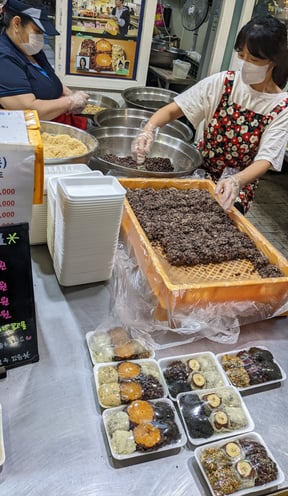

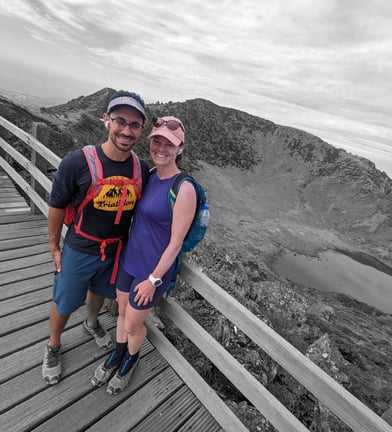

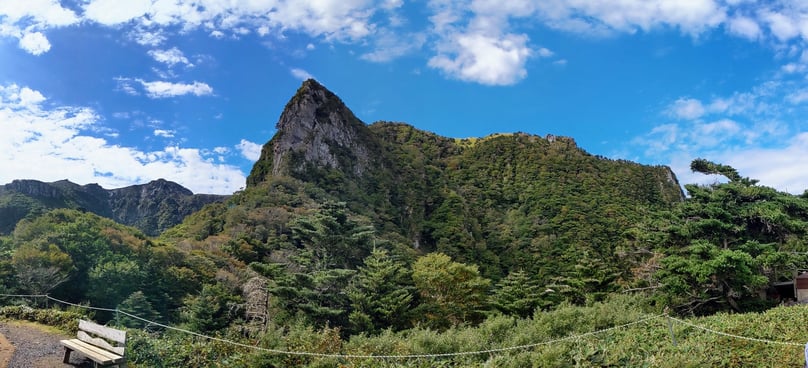

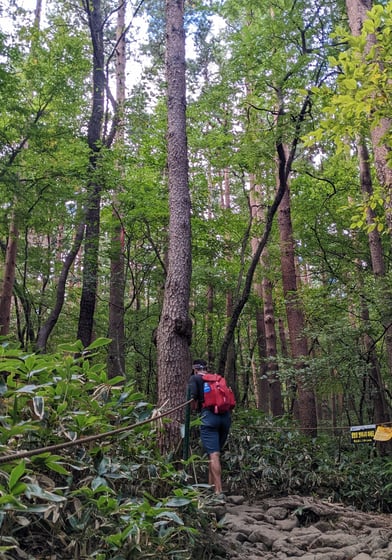

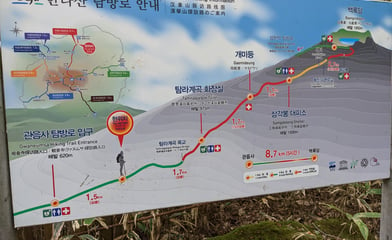

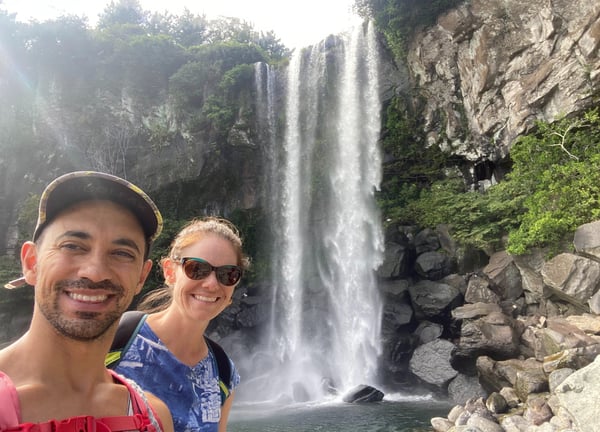

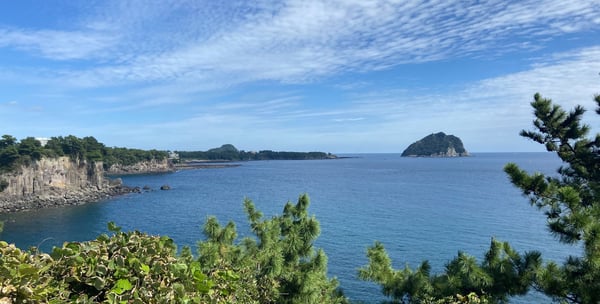

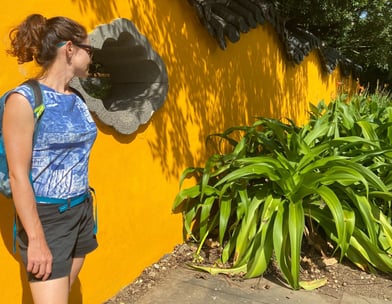

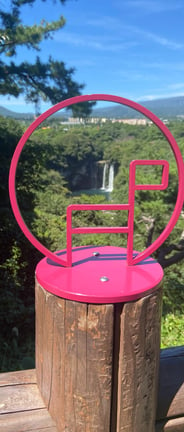

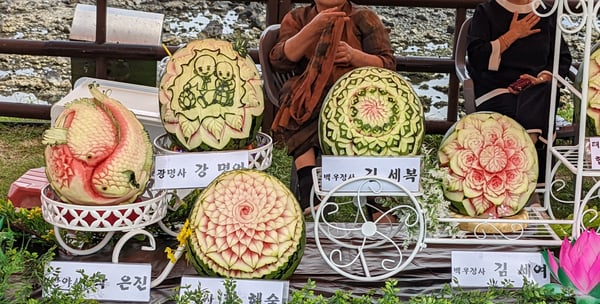

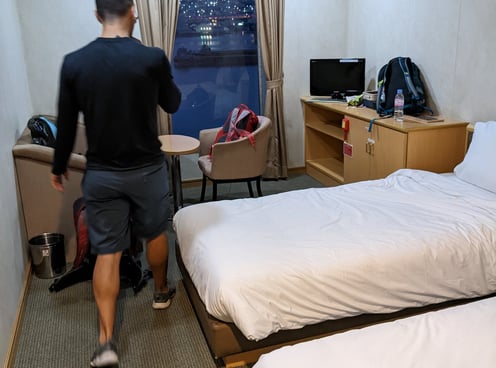

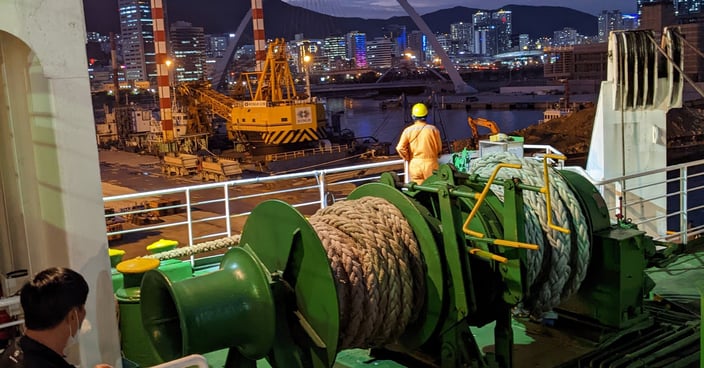

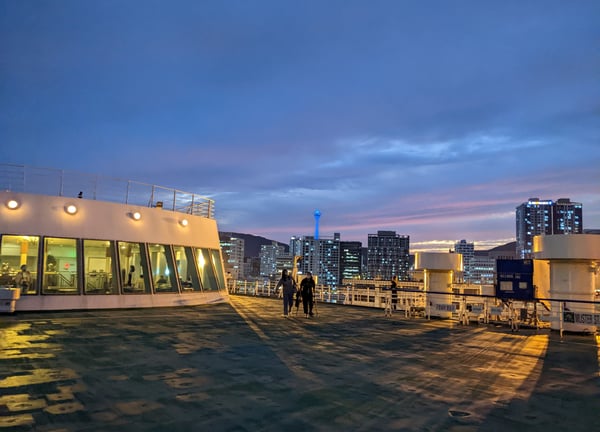

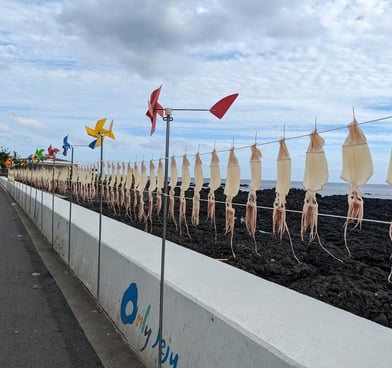

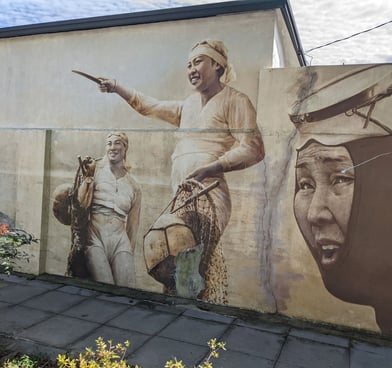

From top left clockwise: carved watermelons! an instagrammable wall; public art on Jeju was often horse themed like this little red post framing the waterfall; Cheonjiyeon waterfall, and coastal views
Shadie shows his excitement for some very large pork knuckle. At right: mix of mochi
Hallasan was perhaps my favorite hike so far. Lots of pleasant red pine forests, occasional open vistas showing the jagged peak and well-maintained trail. At bottom right is one of the handy signs along the trail that show your progress and level of difficulty by section.
From left to right, top to bottom: Coastal views and plenty of bike parking along the blue-line marked route shown here. A wall mural of Haenyeo women, which interestingly is the exact image on the cover of the novel Island of the Sea Women. I wondered, which came first? Squid hanging out to dry on the side of the road!
Get in touch


